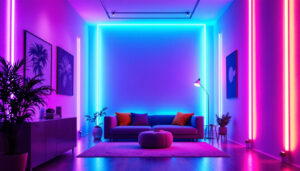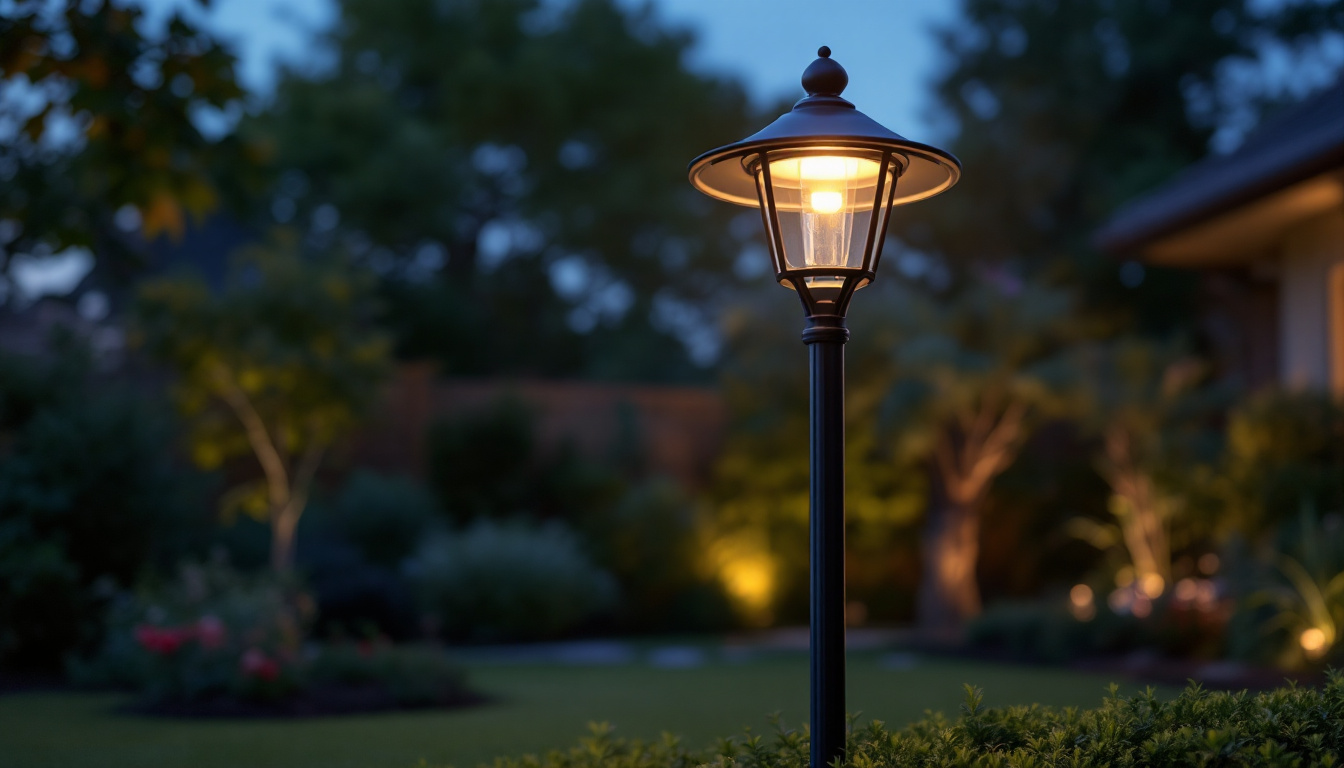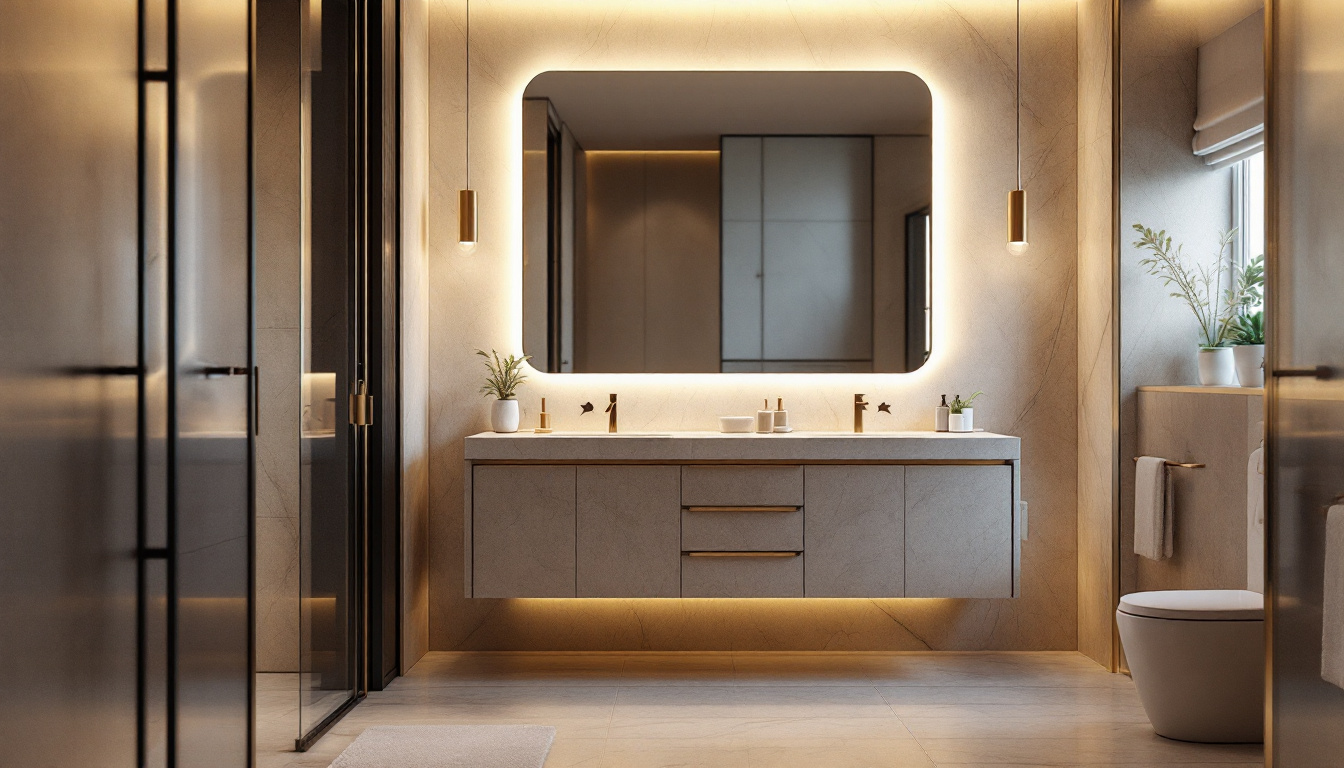

Lighting plays a crucial role in enhancing the aesthetics and functionality of outdoor spaces. For lighting contractors, understanding the essentials of backyard light posts is vital for delivering exceptional results to clients. This article delves into the various aspects of backyard light posts, including types, installation tips, and maintenance practices, ensuring that contractors are well-equipped to handle their projects effectively.
Backyard light posts are not just functional elements; they also contribute significantly to the overall ambiance of outdoor spaces. These fixtures can illuminate pathways, highlight landscaping features, and provide security. For contractors, selecting the right type of light post is essential for meeting client expectations and ensuring safety.
There are several types of backyard light posts available, each designed for specific purposes and aesthetics. Understanding these types can help contractors make informed decisions when recommending options to clients.
Traditional light posts often feature classic designs that evoke a sense of nostalgia. These fixtures are typically made of materials like wrought iron or brass and can complement historical or vintage-style homes. On the other hand, modern light posts boast sleek designs and are often constructed from materials such as aluminum or stainless steel, making them suitable for contemporary outdoor spaces. Additionally, solar-powered light posts have gained popularity in recent years, offering an eco-friendly alternative that harnesses sunlight during the day and illuminates the night without the need for electrical wiring.
When selecting light posts, the material plays a significant role in durability and maintenance. Aluminum is lightweight and resistant to rust, making it a popular choice for many contractors. Conversely, wrought iron offers a classic look but may require more maintenance to prevent corrosion.
Plastic light posts are also available and can be an economical choice. However, they may not provide the same level of durability as metal options. Contractors should assess the specific needs of each project to determine the most suitable material. For instance, in coastal areas where saltwater can accelerate corrosion, stainless steel or specially coated aluminum may be more appropriate. Furthermore, the choice of material can also affect the light post’s ability to withstand harsh weather conditions, ensuring longevity and functionality throughout the seasons.
Backyard light posts come in various heights and styles, allowing contractors to tailor their recommendations based on the landscape and client preferences. Taller posts are ideal for illuminating larger areas, while shorter posts can create intimate lighting for seating areas.
Additionally, the style of the light post should align with the overall design of the backyard. For instance, a rustic wooden post may suit a garden-themed landscape, while a sleek metal post may be more appropriate for a modern patio. Some light posts also feature decorative elements such as lantern-style fixtures or intricate scrollwork, which can enhance the aesthetic appeal of outdoor spaces. Moreover, integrating smart lighting technology into these posts can provide homeowners with the ability to control brightness and color, further customizing their outdoor experience and enhancing the versatility of their lighting solutions.
Proper installation of backyard light posts is critical to ensuring their functionality and longevity. Lighting contractors must follow best practices to achieve optimal results.
Before installation, it is essential to plan the layout of the light posts. This involves considering the areas that require illumination, the spacing between posts, and the overall design of the landscape. Contractors should take into account the height and brightness of the fixtures to ensure adequate lighting coverage.
Using a measuring tape and marking the intended locations can help visualize the layout. It is also advisable to conduct a walk-through with the client to ensure their preferences are met before proceeding with the installation. During this phase, contractors can also discuss the potential for incorporating smart lighting options, which allow for remote control and scheduling, adding an extra layer of convenience and energy efficiency. Additionally, considering the aesthetic elements, such as the style of the light fixtures and their alignment with existing landscape features, can enhance the overall appeal of the outdoor space.
When installing light posts, electrical considerations are paramount. Contractors should ensure that they comply with local electrical codes and regulations. This may involve obtaining necessary permits and ensuring proper grounding for safety.
Additionally, contractors should consider the power source for the light posts. Options include hardwired connections, solar-powered fixtures, or low-voltage systems. Each option has its advantages and challenges, and contractors should choose based on the specific project requirements. For instance, solar-powered lights can be an excellent choice for environmentally conscious clients, as they reduce electricity costs and are easier to install without extensive wiring. However, it’s crucial to assess the sunlight exposure in the area to ensure that solar fixtures will receive adequate energy throughout the day.
Once the layout and electrical considerations are addressed, securing the light posts is the next step. Proper anchoring is crucial to prevent the posts from leaning or toppling over, especially in adverse weather conditions.
Using concrete footings can provide stability, particularly for taller posts. Contractors should also ensure that the posts are level during installation to maintain a professional appearance. In addition to concrete, using metal brackets or stakes can further enhance stability, especially in areas prone to high winds. It’s also beneficial to consider the potential for future landscaping changes, such as adding trees or shrubs, which may impact the light’s effectiveness. Therefore, leaving room for adjustments or repositioning can be a wise strategy, ensuring that the lighting remains effective as the landscape evolves over time.
Regular cleaning of light posts is necessary to remove dirt, debris, and any buildup that can affect their performance. Contractors should recommend cleaning schedules to clients, especially in areas with heavy foliage or dust.
During cleaning, it is also important to inspect the fixtures for any signs of damage or wear. Checking for loose connections, cracked lenses, or rust can help identify potential issues before they become significant problems.
Over time, bulbs and fixtures may need replacement due to burnout or damage. Contractors should educate clients about the types of bulbs used in their light posts and the expected lifespan of each type. This information can help clients plan for replacements and maintain consistent lighting in their outdoor spaces.
When replacing bulbs, it is essential to use the correct wattage and type to ensure compatibility with the fixture. Contractors should also advise clients on energy-efficient options, such as LED bulbs, which can reduce energy costs and extend the life of the fixtures.
Seasonal changes can impact the maintenance needs of backyard light posts. In colder climates, contractors should inform clients about the potential for snow and ice buildup, which can affect the performance of the lights.
During the winter months, it may be necessary to clear snow and ice from around the light posts to ensure they remain visible and functional. Additionally, contractors should recommend seasonal checks to ensure that the electrical connections are secure and functioning properly.
Backyard light posts can significantly enhance the visual appeal of outdoor spaces. By understanding how to integrate these fixtures into the overall design, contractors can help clients achieve their desired aesthetic.
One of the key aspects of using light posts is their ability to complement existing landscape features. For example, strategically placing light posts near trees, shrubs, or garden beds can create a stunning visual effect while providing necessary illumination.
Contractors should consider the height and brightness of the fixtures to ensure they highlight the desired features without overwhelming the space. Soft lighting can create a warm ambiance, while brighter lights can draw attention to specific elements.
Backyard light posts can also be used to create focal points within the landscape. By positioning a light post at the end of a pathway or near a seating area, contractors can guide the eye and enhance the overall flow of the outdoor space.
In addition, using different styles or colors of light posts can add visual interest and create a cohesive design. For instance, a series of matching posts along a pathway can lead guests through the garden, while a unique post can serve as a standalone feature.
As technology continues to advance, incorporating smart technology into backyard light posts has become increasingly popular. Contractors should stay informed about the latest innovations, such as smart lighting systems that can be controlled via smartphone apps or voice commands.
These systems offer clients greater flexibility and convenience, allowing them to adjust lighting levels, set schedules, and even change colors to suit different occasions. Educating clients about these options can enhance their overall satisfaction and position contractors as knowledgeable professionals in the field.
Backyard light posts are essential elements in outdoor lighting design, offering both functionality and aesthetic appeal. For lighting contractors, understanding the various types, installation techniques, and maintenance practices is crucial for delivering exceptional results.
By staying informed about the latest trends and technologies, contractors can provide clients with innovative solutions that enhance their outdoor spaces. Whether it’s illuminating pathways, highlighting landscape features, or creating inviting atmospheres, backyard light posts play a vital role in transforming outdoor environments into beautiful and functional spaces.
Ultimately, investing time and effort into mastering the essentials of backyard light posts will not only benefit contractors in their current projects but also contribute to their long-term success in the lighting industry.
Ready to elevate your lighting projects with the highest quality backyard light posts? Look no further than LumenWholesale, where we provide contractors with spec-grade lighting solutions at unbeatable wholesale prices. Say goodbye to local distributor markups and hello to a vast selection of industry-standard lighting that promises reliability and high performance. With the convenience of free shipping on bulk orders, LumenWholesale is your go-to source for premium lighting that merges quality with affordability. Don’t compromise on your lighting needs—choose LumenWholesale for the best value. Start browsing our collection today and light up your outdoor spaces with confidence. Wholesale Lighting at the Best Value.

Discover the essential insights lighting contractors need to know about vanity lights for bathrooms.

Discover how 100 Watt LED high bay lights are revolutionizing lighting contractors’ projects with enhanced efficiency, cost savings, and superior illumination.

Discover how incorporating an outdoor cable splicer can elevate your lighting contracting business.

Discover how low bay industrial LED lighting is revolutionizing the work of lighting contractors by offering simplified installation, enhanced energy efficiency, and superior illumination.
Get notified when NEW deals are released.
Optimize your budget with wholesale discounts.
Only top-quality, specification-grade lighting products.
No additional costs at checkout - what you see is what you pay.
We understand the unique needs of contractors.